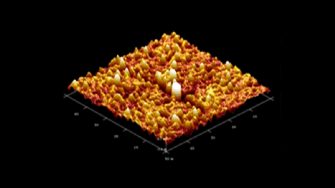- UNSW
- ...
- UNESCO Centre for Membrane Science and Technology
- Our research
- Membrane material development
- Nanocomposite membranes
- Home
- About us
-
Our research
- Membrane material development
-
Water treatment
- Study of floc strength and stability during direct filtration of surface water
- Mass and heat transfer in submerged vacuum membrane distillation and crystallization
- Development of novel membrane integrity tests for virus sized particles
- Reuse of old reverse osmosis membranes used in desalination plants | UNESCO Centre for Membrane Science and Technology - UNSW Sydney
- Optimisation of hybrid coagulation/submerged membrane bioreactor treatment of wastewaters | UNESCO Centre for Membrane Science and Technology - UNSW Sydney
- Developing national validation guidelines for MBRs in water recycling
- Assisted forward osmosis for energy savings in RO desalination
- Characterising nanostructure functionality of conventional and advanced polymeric membranes using electrical impedance spectroscopy
- Optimising low-pressure membrane pre-treatment for desalination | UNESCO Centre for Membrane Science and Technology - UNSW Sydney
-
Process design & modelling
- Computational fluid dynamics modelling of Membrane Bioreactors
- Resilience modelling of advanced water treatment plants
- Mechanical reliability of microporous membranes in water recycling applications
- Optimisation of Membrane Distillation Processes
- Feedback Destabilizing Control of Electro-osmotic Flow
- Greenhouse gas technology
- Bio-separations
-
Food & agriculture
- Membrane facilitated subsurface drip irrigation
- Milk ultrafiltration
- Protein recovery from potato processing water using ultrafiltration membrane
- Phosphorus recovery from wastewater
- Sequential chemical and enzymatic cleaning of ultrafiltration membranes in dairy applications
- Application of membrane separation process in concentration and separation of polyphenol compounds for evaluation of their health benefits
- Optimising low-pressure membrane pre-treatment for desalination
-
Archived research projects
- Composite biocatalytic nanoflower
- Superhydrophobic Membranes for Membrane Distillation Applications
- Polymers for Isoporous and Functional Membranes
- Separation performance of dip-coated microporous hollow fibre polymer inclusion membranes (PIM)
- Improvement in Fouling Release Properties of Ultrafiltation PVDF Membranes
- Thin Film Nano-composite Membrane Fabrication for Carbon Dioxide Capture from Flue Gas
- MOF based highly efficient gas separation membrane
- Biocatalytic membrane reactors for greenhouse gas capture
- Evaluation of CO2 Capture with High Performance Hollow Fiber Membranes from Flue Gas: A Pilot Scale Study
- Improved Carbon Dioxide Separation Performance with Additives of PEO/PDMS Copolymer in PPO Membranes
- Our facilities
- Our services
- Contact us
- Home
- About us
-
Our research
Water treatment
- Study of floc strength and stability during direct filtration of surface water
- Mass and heat transfer in submerged vacuum membrane distillation and crystallization
- Development of novel membrane integrity tests for virus sized particles
- Reuse of old reverse osmosis membranes used in desalination plants | UNESCO Centre for Membrane Science and Technology - UNSW Sydney
- Optimisation of hybrid coagulation/submerged membrane bioreactor treatment of wastewaters | UNESCO Centre for Membrane Science and Technology - UNSW Sydney
- Developing national validation guidelines for MBRs in water recycling
- Assisted forward osmosis for energy savings in RO desalination
- Characterising nanostructure functionality of conventional and advanced polymeric membranes using electrical impedance spectroscopy
- Optimising low-pressure membrane pre-treatment for desalination | UNESCO Centre for Membrane Science and Technology - UNSW Sydney
Process design & modelling
- Computational fluid dynamics modelling of Membrane Bioreactors
- Resilience modelling of advanced water treatment plants
- Mechanical reliability of microporous membranes in water recycling applications
- Optimisation of Membrane Distillation Processes
- Feedback Destabilizing Control of Electro-osmotic Flow
Food & agriculture
- Membrane facilitated subsurface drip irrigation
- Milk ultrafiltration
- Protein recovery from potato processing water using ultrafiltration membrane
- Phosphorus recovery from wastewater
- Sequential chemical and enzymatic cleaning of ultrafiltration membranes in dairy applications
- Application of membrane separation process in concentration and separation of polyphenol compounds for evaluation of their health benefits
- Optimising low-pressure membrane pre-treatment for desalination
Archived research projects
- Composite biocatalytic nanoflower
- Superhydrophobic Membranes for Membrane Distillation Applications
- Polymers for Isoporous and Functional Membranes
- Separation performance of dip-coated microporous hollow fibre polymer inclusion membranes (PIM)
- Improvement in Fouling Release Properties of Ultrafiltation PVDF Membranes
- Thin Film Nano-composite Membrane Fabrication for Carbon Dioxide Capture from Flue Gas
- MOF based highly efficient gas separation membrane
- Biocatalytic membrane reactors for greenhouse gas capture
- Evaluation of CO2 Capture with High Performance Hollow Fiber Membranes from Flue Gas: A Pilot Scale Study
- Improved Carbon Dioxide Separation Performance with Additives of PEO/PDMS Copolymer in PPO Membranes
- Our facilities
- Our services
- Contact us

In this project we examined two approaches for fabrication of nano-composite membranes: blending the nanoparticles in the membrane and coating the nanoparticles on the surface of the membrane by low temperature hydrothermal process (LTH). The blending approach is easily implemented however the loading of inorganic particles are limited by mechanical integrity of membranes. In the coating approach titania sol-gel particles were dip-coated onto membrane substrates, followed by heat and UV tre...
In this project we examined two approaches for fabrication of nano-composite membranes: blending the nanoparticles in the membrane and coating the nanoparticles on the surface of the membrane by low temperature hydrothermal process (LTH). The blending approach is easily implemented however the loading of inorganic particles are limited by mechanical integrity of membranes. In the coating approach titania sol-gel particles were dip-coated onto membrane substrates, followed by heat and UV treatments to extract the residual organic templates.There are many approaches to modify polymeric membranes to mitigate fouling interactions for filtration applications. Most of these approaches are based on increasing membrane hydrophilicity and reducing micro-scale roughness either by grafting or coating hydrophilic organic moieties such as polyethylene glycol (PEG). More recently an alternative approach to reduce fouling characteristics of membranes has been to incorporate inorganic particles into polymeric membranes.
